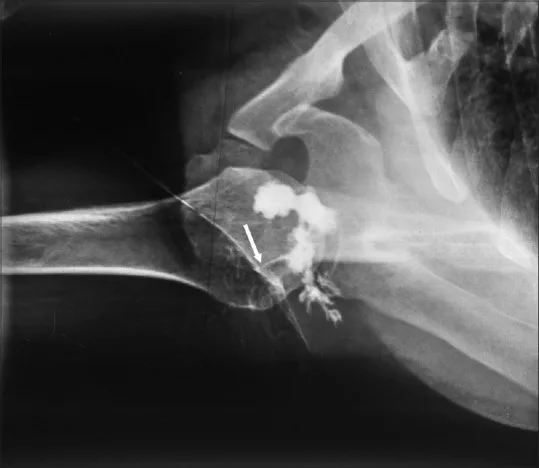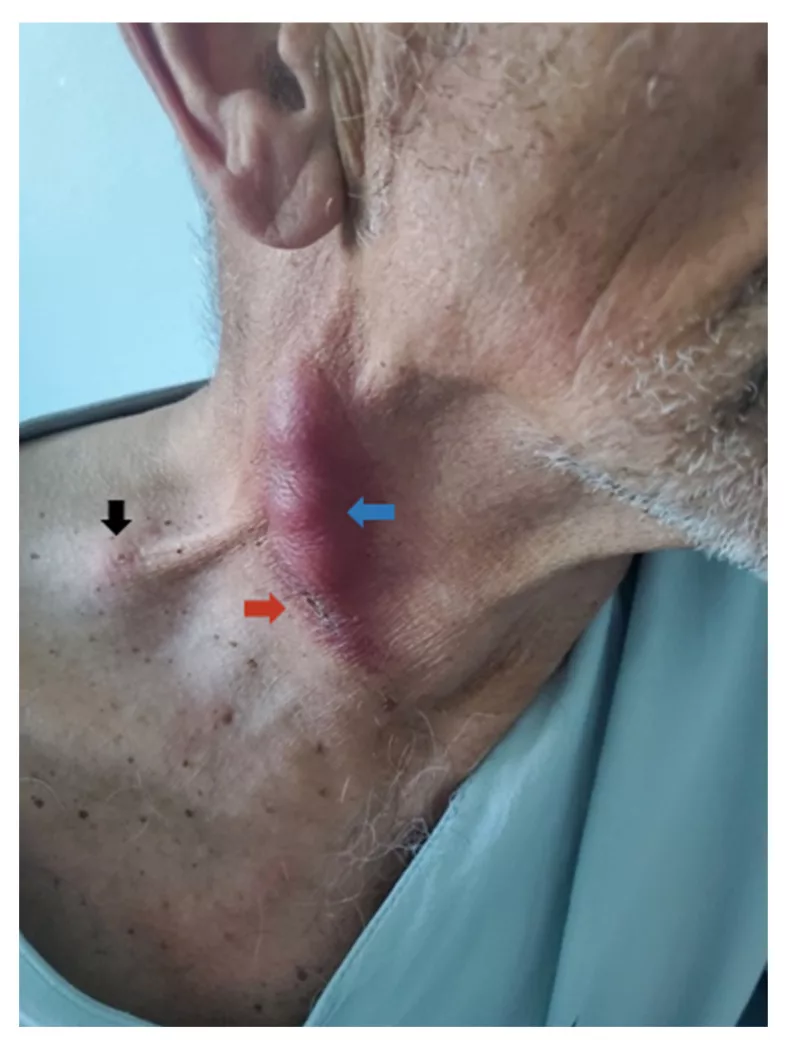Rabbit fever, deer fly fever, or tularemia is a rare yet serious infection that can affect a wide range of organs, including lymph nodes, skin, lungs, eyes, throat, intestines, etc. The causative agent for this disorder is the bacterium Francisella tularensis. It is primarily transmitted to humans through contact with infected animals, insect bites (like ticks or deer flies), ingestion of contaminated water or food, or inhalation of contaminated particles. The intensity of the disease can range from mild to life-threatening. Tularemia is found in the US, European, and Eastern Mediterranean countries. As per WHO reports, the prevalence of tularemia in the Eastern Mediterranean Region (EMRO) was 6.2%1Sholeh, M., Moradkasani, S., & Esmaeili, S. (2024). Epidemiology of tularemia in the countries of the WHO Eastern Mediterranean Region (EMRO): A systematic review and meta-analysis. PLOS Neglected Tropical Diseases, 18(5), e0012141. while an incidence of 0.04 cases/per 100,000 population per year was seen in the US.2Bishop, A., Wang, H. H., Donaldson, T. G., Brockinton, E. E., Kothapalli, E., Clark, S., … & Teel, P. D. (2023). Tularemia cases increase in the USA from 2011 through 2019. Current Research in Parasitology & Vector-Borne Diseases, 3, 100116. Doctors treat infection with antibiotic therapy and perform symptomatic management where needed.
Tularemia Causes
Two types of the bacterium Francisella tularensis are responsible for rabbit fever. Type A is prevalent in the US and causes more serious illness, while type B is milder and commonly seen in other parts of the world (Europe, North America, etc.). Studies show that type A F. tularensis infection has a higher mortality rate than type B.3Harik, N. S. (2013). Tularemia: epidemiology, diagnosis, and treatment. Pediatric Annals, 42(7), 288-292.
 This highly infectious gram-negative organism lives inside animals, from where it can be transferred to humans. Thus, it is a zoonotic infection. Animals serve as “reservoirs” for the micro-organisms. The animals that usually carry F. tularensis include:
This highly infectious gram-negative organism lives inside animals, from where it can be transferred to humans. Thus, it is a zoonotic infection. Animals serve as “reservoirs” for the micro-organisms. The animals that usually carry F. tularensis include:
- Ticks
- Deer fly
- Hares
- Rabbits
- Cats
- Rodents
- Dogs
- Raccoons
- Cattles
European Union countries and Turkey have seen a large number of cases in recent years. The most likely source of these outbreaks was rodents.4Gürcan, Ş. (2014). Epidemiology of tularemia. Balkan Medical Journal, 2014(1), 3-10.
Risk Groups
Due to the highly transmissible nature of the pathogen, the following groups of people are at a greater risk of developing tularemia:
- Residents of the US, Europe, and Turkey.
- Butchers and individuals who manage uncooked meat
- Farm workers
- Veterinary professionals
- People with weakened immune systems (HIV patients, patients on immunosuppressant drugs)
Tularemia Transmission
There are multiple ways in which you can get tularemia. F. tularensis can survive in harsh environments. The bacteria can survive in air, water, soil, and carcasses for weeks. Thus, the infectivity of this pathogen is very high. The high infectivity and diverse ways of spread make it a deadly combination. You can acquire the disease in the following ways:
- Bites from animals like rodents, cats, rabbits, and squirrels.5Borgschulte, H. S., Jacob, D., Zeeh, J., Scholz, H. C., & Heuner, K. (2022). Ulceroglandular form of tularemia after squirrel bite: a case report. Journal of Medical Case Reports, 16(1), 309.
- Bites from insects like ticks, deer flies, and even mosquitos.
- Breathing in the aerosol form of the airborne bacteria can lead to the development of the disease. F. tularensis can be used as a potential biological weapon because it is highly infectious and can spread through air.6Dennis, D. T., Inglesby, T. V., Henderson, D. A., Bartlett, J. G., Ascher, M. S., Eitzen, E., … & Working Group on Civilian Biodefense. (2001). Tularemia as a biological weapon: medical and public health management. Jama, 285(21), 2763-2773.
- Consuming food or water contaminated with the bacteria.
- Touching and handling infected animals or even dead (infected) animals (carcasses) can lead to transmission of the disease. The bacteria can move through the breaks/pores in your skin if the animal’s body fluids come in contact with your skin. Moreover, the bacterial pathogen can get into your eyes, nose, or mouth (if you touch the face after touching the animals).
Tularemia Symptoms
The incubation period for tularemia is generally 3 to 5 days. In most cases, symptoms appear after the incubation period. However, in some cases, there are now signs of infection for up to two weeks (or more).
Based on the organs involved and the consequent symptoms, experts categorize tularemia into six different types:
Glandular Tularemia:
This is a rare type of disease in which patients suffer from high-grade fever (with chills) and swelling of lymph nodes. The swollen lymph nodes are painful, but there are no skin abnormalities.
Ulceroglandular Tularemia:
This is the most common type of tularemia that accounts for 40 to 75% of all cases. As the name indicates, this type of infectious disease is characterized by the formation of skin ulcers and painful lymphadenopathy. This type arises mostly when the bacteria transmission occurs through the skin (tick/deer fly bite or animal handling). An ulcer develops on the site of bacterial entry into the body. In addition to the ulceration, the regional lymph nodes swell. Mostly, lymph nodes of the armpit and groin swell as a result of the infection.

Patients present with fever, painful lymph nodes, and ulcers on the bite site. A 32-year-old man presented to the ER with the following symptoms and was diagnosed with ulceroglandular tularemia.7Balestra, A., Bytyci, H., Guillod, C., Braghetti, A., & Elzi, L. (2018). A case of ulceroglandular tularemia presenting with lymphadenopathy and an ulcer on a linear morphoea lesion surrounded by erysipelas. International Medical Case Reports Journal, 313-318. He had the following issues:
- Persistent fever
- Inguinal lymphadenopathy (swelling of groin lymph nodes)
- Ulcer on the left lower limb
In another clinical study, a 33-year-old male diagnosed with ulceroglandular form presented with a 2-week history of ulcer-induced swelling and pain on the right index finger, low-grade fever, and right axillary lymphadenopathy (armpit lymph node swelling).8Wormser, V. R., & Wormser, G. P. (2023). Ulceroglandular Tularemia from the Bite of a Deerfly in Utah. The American Journal of Medicine, 136(8), 768-769. The painful ulcer developed at the site of the deerfly bite. Headache and fatigue may also be present.
Oculoglandular:
The oculoglandular type arises when the bacteria enters the eyes. Several times, butchers acquire this form of tularemia when butchering infected animal’s meat. There is evident inflammation of the eyes, which become red and sensitive to light. Sometimes, ulcers form inside the eyelids. Moreover, the lymph nodes in front of the ear (and the ones in the jaw and neck) also swell up and become painful.
Different presentations of the condition have been observed. For example, a 60-year-old man complained of fever and orbital cellulitis with cervical lymph adenopathy. Physicians suspected chasing zebras to be a cause of the infection.9Kreutzmann, T., Schönfeld, A., Zange, S., & Lethaus, B. (2021). A Case Report of Oculoglandular Tularemia—Chasing Zebras Among Potential Diagnoses. Journal of Oral and Maxillofacial Surgery, 79(3), 629-636.
A 2023 clinical study concluded that the most salient symptoms of oculoglandular tularemia are fever, burning in the eyes (and inflammation), and submandibular (in the lower jaw)+periauricular (in front of the ear) lymphadenopathy. The mean time of diagnosis ranged from 41 to 94 days.10Copur, B., & Surme, S. (2023). Water-borne oculoglandular tularemia: Two complicated cases and a review of the literature. Travel Medicine and Infectious Disease, 51, 102489.
Oropharyngeal:
The oropharyngeal form affects the oral (oro) and throat (pharyngeal) structures. Most individuals acquire this type by consuming contaminated food or water. Patients experience irritating ulcers in the mouth, swelling of the tonsils (tonsilitis), and throat pain.

Several patients also report having a sore throat and swollen cervical (neck) lymph nodes. According to reports, most of the reported cases in Turkiye were pediatric patients. In addition to the lymph node enlargement, fever, malaise, and loss of appetite were frequent symptoms. Thus, children are at a greater risk of tularemia.11Kara, S. S., Polat, M., Erdeniz, E. H., & Donmez, A. S. (2024). Pediatric Oropharyngeal Tularemia Cases: Challenges in Management. Vector-Borne and Zoonotic Diseases. Infected individuals may also experience vomiting and diarrhea.
Oropharyngeal tularemia also tends to develop during the pregnancy. According to clinical studies, oropharyngeal and ulceroglandular tularemia were most prevalent in pregnant women. F. tularensis infection can lead to significant complications and even pregnancy loss.12Fleck-Derderian, S., Davis, K. M., Winberg, J., Nelson, C. A., & Meaney-Delman, D. (2024). A systematic review of tularemia during pregnancy. Clinical Infectious Diseases, 78(Supplement_1), S47-S54.
Pneumonic:
Pneumonic or pulmonary tularemia is the most serious form that requires special medical attention. The infection impacts the lungs when the bacteria enter the respiratory system by breathing in aerosols. You may also develop this deadly type if untreated ulceroglandular type spreads to other organs (lungs) via the bloodstream. In addition to pneumonia (inflammation of the air sacs), the following complications are also seen:
Coughing
Some patients experience a wet cough, while others suffer from a dry cough. Due to the combination of symptoms (coughing, sputum, shortness of breath, and chest pain), tularemia can mimic lung cancer.13Kıymaz, Y. Ç., & Özbey, M. (2024). A case of pulmonary tularemia mimicking lung cancer. Diagnostic Microbiology and Infectious Disease, 110(4), 116554.
Chest pain
Pleuritic chest pain is a notable feature of pneumonic tularemia. Pain in the chest interferes with the normal breathing patterns and can cause a lot of trouble.14Al-Abbad, E. A., Albarrak, Y. A. I., Al Shuqayfah, N. I., Nahhas, A. A., Alnemari, A. F., Alqurashi, R. K., … & Aljuaid, M. M. N. (2022). An Overview on Atypical Pneumonia Clinical Features and Management Approach. Archives of Pharmacy Practice, 13(1-2022), 24-30.
Breathing Difficulties
Researchers have noticed sufficient breathing difficulties in patients suffering from pulmonary tularemia. Thoracic lymphadenopathy may accompany breathing issues.15Vacca, M., Wilhelms, B., Zange, S., Avsar, K., Gesierich, W., & Heiß-Neumann, M. (2024). Thoracic manifestations of tularaemia: a case series. Infection, 1-8.
Typhoidal:
When there are no localized symptoms of the typical syndromes, the type is called typhoidal. Thus, any combination of symptoms can occur in typhoidal tularemia.
Complications & Long-term Effects Of Tularemia
As the bacterial pathogen seriously impacts a variety of organs, unfortunately, there can be long-term consequences of the disease (if not treated properly!).
You may experience the following long-term consequences of tularemia:
Sepsis
The body’s extreme response (i.e., sepsis) to infection can lead to multiple organ failure (by spreading through blood) and even death. Type A strain of F. tularensis is capable of causing severe pulmonary tularemia and severe sepsis, which is the major cause of death in patients.16Sharma, J., Mares, C. A., Li, Q., Morris, E. G., & Teale, J. M. (2011). Features of sepsis caused by pulmonary infection with Francisella tularensis Type A strain. Microbial pathogenesis, 51(1-2), 39-47.
Meningitis
Francisella tularensis can rarely cause serious conditions like meningitis (inflammation of the brain layers). But, currently, no guidelines are available to treat tularemic meningitis, making it dangerous.17Ducatez, N., Melboucy, S., Bentayeb, H., Dayen, C., Suguenot, R., Lecuyer, E., & Douadi, Y. (2022). A case of Francisella tularensis meningitis in a 64-year-old man treated with quinolones. Infectious Diseases Now, 52(2), 107-109.
Heart Problems
Inflammation of the heart can rarely result from tularemia infection. A study conducted in Central Europe highlighted 13 cases of myocarditis due to glandular/ulceroglandular tularemia.18Frischknecht, M., Meier, A., Mani, B., Joerg, L., Kim, O. C. H., Boggian, K., & Strahm, C. (2019). Tularemia: an experience of 13 cases, including a rare myocarditis in a referral center in Eastern Switzerland (Central Europe) and a review of the literature. Infection, 47, 683-695. Infective endocarditis and chronic heart failure are also linked to tularemia infection.19Pazº, J., Sanjurjo, A., Sánchez, P., Arca, A., Novoa, L., Rodríguez, M., … & de La Fuente, J. (2013). Microbiology and treatment of infective endocarditis. European Journal of Internal Medicine, 24, e212.
Hepatitis
Granulomatous hepatitis is another rarely seen long-term complication of tularemia infection. Luckily, signs and symptoms resolve effectively with antibiotic treatment in such cases.20Kocabaş, E., Gündeşlioğlu, Ö. Ö., Çil, M. K., Çay, Ü., Doran, F., & Soyupak, S. (2020). A rare cause of granulomatous hepatitis; Tularemia. Journal of Infection and Public Health, 13(7), 1003-1005.
Tularemia Diagnosis
The F. tularensis pathogen resides in different parts of the body. Thus, a wide array of tests are required to properly diagnose tularemia, including:
Blood Tests
A sample of blood is taken to detect the presence of F. tularensis. However, the results may take some time to become positive because the bacteria grow slowly (and it takes long to reach detectable levels). Doctors usually repeat blood tests over a few weeks to correlate with the clinical findings.
Nasal/Throat Swab
In case of suspected oropharyngeal tularemia, your doctor will advise a nasal swab test to get a sample of mucus from your throat or nose. It is a simple procedure in which a small, soft tip (attached to a long stick) is used to extract a sample of mucus.
Biopsy
Enlargement of lymph nodes is also seen in cancer, and there is an uncanny resemblance between pulmonary tularemia and lung cancer. Thus, doctors often remove very large lymph nodes and pieces of skin lesions and send the tissues to the lab for examination. The biopsy sample is observed for bacterial growth.
Lungs (Pleural Fluid) Test
Thoracentesis is the process of removing fluid from your lungs (pleural fluid). In the case of pulmonary/pneumonic tularemia, the bacteria infest the lung fluids. Thus, a lab technician checks for bacterial growth in the fluid sample.
Tularemia Treatment
The treatment aims to control bacterial populations and rid the patient of the symptoms. In addition to antibiotic administration, doctors also provide symptomatic management (especially for very serious patients).
Antibiotic Therapy:
The mainstay of tularemia therapy is antibiotic therapy. Your healthcare provider will decide (based on your condition) whether you need oral or injectable antibiotics. This very disease can take an ugly form. Thus, doctors advise prompt treatment without any delay.
Doctors use a variety of broad-spectrum antibiotics to treat tularemia. According to the latest research, fluoroquinolones and doxycycline work well for mild infections, but the gold standard for tularemia treatment is streptomycin and gentamicin.21Maurin, M., Pondérand, L., Hennebique, A., Pelloux, I., Boisset, S., & Caspar, Y. (2024). Tularemia treatment: experimental and clinical data. Frontiers in Microbiology, 14, 1348323. Drugs like aminoglycosides, fluoroquinolones, and tetracyclines are high-efficacy anti-microbial that do a great job in managing ulceroglandular, glandular, and oropharyngeal types. However, ciprofloxacin has a slight edge over other drugs in pneumonic tularemia management.22Nelson, C. A., Winberg, J., Bostic, T. D., Davis, K. M., & Fleck-Derderian, S. (2024). Systematic review: clinical features, antimicrobial treatment, and outcomes of human tularemia, 1993–2023. Clinical Infectious Diseases, 78(Supplement_1), S15-S28.
A 2024 study on tularemia management in the US revealed that high-efficacy antibiotics have great results. Moreover, it concluded that fluoroquinolones are effective in tularemia treatment.23Wu, H. J., Bostic, T. D., Horiuchi, K., Kugeler, K. J., Mead, P. S., & Nelson, C. A. (2024). Tularemia clinical manifestations, antimicrobial treatment, and outcomes: an analysis of US surveillance data, 2006–2021. Clinical Infectious Diseases, 78(Supplement_1), S29-S37. Azithromycin can also serve as an effective first-line of treatment for pregnant patients because it can overcome the side effects caused by gentamicin and ciprofloxacin.24Yeni, D. K., Büyük, F., Ashraf, A., & Shah, M. S. U. D. (2021). Tularemia: a re-emerging tick-borne infectious disease. Folia microbiologica, 66(1), 1-14.
Your healthcare provider may also prescribe over-the-counter painkillers to alleviate pain and inflammation.
Tularemia Prevention
You can keep tularemia at bay by adopting some simple steps, including:

- When moving to areas with ticks, wear long clothes and if possible, spray DEET on the clothes.
- After returning from outside, thoroughly check for any ticks attached to the scalp, skin, or clothes.
- Remove ticks from your pets to prevent them from being bitten (and infected).
- Wear safety gloves, mask, and eye protection when cutting raw meat. Also, gloves should be used when handling dead or alive animals.
- Properly cook meat to kill the microbes. Ensure clean drinking water (treated water) and always wash hands and utensils before consuming food.
- Avoid mowing near animal carcasses as it may lead to bacterial conversion into an aerosol form.
Final Word
Tularemia is a rare disorder that can affect a wide variety of organs, leading to a syndrome of symptoms. The bacterium Francisella tularensis is a stubborn, gram-negative bacterium responsible for rabbit fever disease. It can survive in a number of places, so humans can acquire the infection via animal contact (through skin pores and eyes), insect/animal bites, contaminated food/water, and inhalation of bacterial aerosols.
Based on the organs impacted and the (consequent symptoms), deerfly fever is divided into six types. Ulceroglandular is the most common, while pneumonic type is the most fatal (due to respiratory involvement). Glandular tularemia rarely occurs. Oculoglandular affects eyes, while oropharyngeal affects the throat region. In typhoidal type, we see a combination of symptoms. Fever, skin/mucosal ulcers, and swollen/painful lymph nodes are seen in almost all types. Doctors treat the infection with antibiotics like streptomycin, gentamycin, aminoglycosides, tetracycline, and fluoroquinolones. Timely diagnosis and treatment are crucial because they can lead to serious, long-term complications like sepsis, heart failure, hepatitis, and even death.
Refrences
- 1Sholeh, M., Moradkasani, S., & Esmaeili, S. (2024). Epidemiology of tularemia in the countries of the WHO Eastern Mediterranean Region (EMRO): A systematic review and meta-analysis. PLOS Neglected Tropical Diseases, 18(5), e0012141.
- 2Bishop, A., Wang, H. H., Donaldson, T. G., Brockinton, E. E., Kothapalli, E., Clark, S., … & Teel, P. D. (2023). Tularemia cases increase in the USA from 2011 through 2019. Current Research in Parasitology & Vector-Borne Diseases, 3, 100116.
- 3Harik, N. S. (2013). Tularemia: epidemiology, diagnosis, and treatment. Pediatric Annals, 42(7), 288-292.
- 4Gürcan, Ş. (2014). Epidemiology of tularemia. Balkan Medical Journal, 2014(1), 3-10.
- 5Borgschulte, H. S., Jacob, D., Zeeh, J., Scholz, H. C., & Heuner, K. (2022). Ulceroglandular form of tularemia after squirrel bite: a case report. Journal of Medical Case Reports, 16(1), 309.
- 6Dennis, D. T., Inglesby, T. V., Henderson, D. A., Bartlett, J. G., Ascher, M. S., Eitzen, E., … & Working Group on Civilian Biodefense. (2001). Tularemia as a biological weapon: medical and public health management. Jama, 285(21), 2763-2773.
- 7Balestra, A., Bytyci, H., Guillod, C., Braghetti, A., & Elzi, L. (2018). A case of ulceroglandular tularemia presenting with lymphadenopathy and an ulcer on a linear morphoea lesion surrounded by erysipelas. International Medical Case Reports Journal, 313-318.
- 8Wormser, V. R., & Wormser, G. P. (2023). Ulceroglandular Tularemia from the Bite of a Deerfly in Utah. The American Journal of Medicine, 136(8), 768-769.
- 9Kreutzmann, T., Schönfeld, A., Zange, S., & Lethaus, B. (2021). A Case Report of Oculoglandular Tularemia—Chasing Zebras Among Potential Diagnoses. Journal of Oral and Maxillofacial Surgery, 79(3), 629-636.
- 10Copur, B., & Surme, S. (2023). Water-borne oculoglandular tularemia: Two complicated cases and a review of the literature. Travel Medicine and Infectious Disease, 51, 102489.
- 11Kara, S. S., Polat, M., Erdeniz, E. H., & Donmez, A. S. (2024). Pediatric Oropharyngeal Tularemia Cases: Challenges in Management. Vector-Borne and Zoonotic Diseases.
- 12Fleck-Derderian, S., Davis, K. M., Winberg, J., Nelson, C. A., & Meaney-Delman, D. (2024). A systematic review of tularemia during pregnancy. Clinical Infectious Diseases, 78(Supplement_1), S47-S54.
- 13Kıymaz, Y. Ç., & Özbey, M. (2024). A case of pulmonary tularemia mimicking lung cancer. Diagnostic Microbiology and Infectious Disease, 110(4), 116554.
- 14Al-Abbad, E. A., Albarrak, Y. A. I., Al Shuqayfah, N. I., Nahhas, A. A., Alnemari, A. F., Alqurashi, R. K., … & Aljuaid, M. M. N. (2022). An Overview on Atypical Pneumonia Clinical Features and Management Approach. Archives of Pharmacy Practice, 13(1-2022), 24-30.
- 15Vacca, M., Wilhelms, B., Zange, S., Avsar, K., Gesierich, W., & Heiß-Neumann, M. (2024). Thoracic manifestations of tularaemia: a case series. Infection, 1-8.
- 16Sharma, J., Mares, C. A., Li, Q., Morris, E. G., & Teale, J. M. (2011). Features of sepsis caused by pulmonary infection with Francisella tularensis Type A strain. Microbial pathogenesis, 51(1-2), 39-47.
- 17Ducatez, N., Melboucy, S., Bentayeb, H., Dayen, C., Suguenot, R., Lecuyer, E., & Douadi, Y. (2022). A case of Francisella tularensis meningitis in a 64-year-old man treated with quinolones. Infectious Diseases Now, 52(2), 107-109.
- 18Frischknecht, M., Meier, A., Mani, B., Joerg, L., Kim, O. C. H., Boggian, K., & Strahm, C. (2019). Tularemia: an experience of 13 cases, including a rare myocarditis in a referral center in Eastern Switzerland (Central Europe) and a review of the literature. Infection, 47, 683-695.
- 19Pazº, J., Sanjurjo, A., Sánchez, P., Arca, A., Novoa, L., Rodríguez, M., … & de La Fuente, J. (2013). Microbiology and treatment of infective endocarditis. European Journal of Internal Medicine, 24, e212.
- 20Kocabaş, E., Gündeşlioğlu, Ö. Ö., Çil, M. K., Çay, Ü., Doran, F., & Soyupak, S. (2020). A rare cause of granulomatous hepatitis; Tularemia. Journal of Infection and Public Health, 13(7), 1003-1005.
- 21Maurin, M., Pondérand, L., Hennebique, A., Pelloux, I., Boisset, S., & Caspar, Y. (2024). Tularemia treatment: experimental and clinical data. Frontiers in Microbiology, 14, 1348323.
- 22Nelson, C. A., Winberg, J., Bostic, T. D., Davis, K. M., & Fleck-Derderian, S. (2024). Systematic review: clinical features, antimicrobial treatment, and outcomes of human tularemia, 1993–2023. Clinical Infectious Diseases, 78(Supplement_1), S15-S28.
- 23Wu, H. J., Bostic, T. D., Horiuchi, K., Kugeler, K. J., Mead, P. S., & Nelson, C. A. (2024). Tularemia clinical manifestations, antimicrobial treatment, and outcomes: an analysis of US surveillance data, 2006–2021. Clinical Infectious Diseases, 78(Supplement_1), S29-S37.
- 24Yeni, D. K., Büyük, F., Ashraf, A., & Shah, M. S. U. D. (2021). Tularemia: a re-emerging tick-borne infectious disease. Folia microbiologica, 66(1), 1-14.





